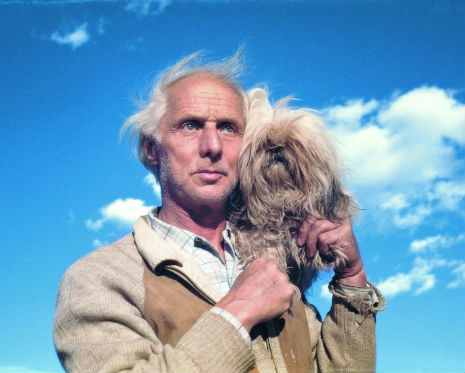
Max Ernst with his dog Katchina, photo by Dorothea Tanning
For Max Ernst painting had to be “invention, discovery, revelation,” and not “decorative amusement, or the plastic invention of felt reality.” Ernst never had any formal training as an artist, he had been a student of philosophy and psychology at Bonn University, which in part explains his cerebral approach to art.
In a response to the horrors of the First World War, having spent four years in the German army serving on both the Western and Eastern fronts, Ernst became a leading figure in the German Dada movement, producing fantastical collages from photographs and botanical drawings of flowers.
In 1922, Ernst moved to France settling in Paris where he was involved with members of the city’s avant garde, including André Breton author of the “First Surrealist Manifesto” in 1924. It was here that Ernst developed a creative technique called “frottage” (not to be confused with dry-humping) with which he produced a series of textured pictures by rubbing crayon over floorboards. He also began to concentrate on painting using random objects to inspire a synthesis of inner and outer worlds.
“If you close your eyes and you look into your inner world, and I believe the best to do is to have one eye closed and to look inside, and this is the inner eye, and with your other eye you have it fixed on reality, what is going on in the world. If you can make a kind of a synthesis of these two important worlds, you come to a result which can be considered as a synthesis of objective and subjective life.”
Max Ernst and the Surrealist Revolution examines how Ernst used random objects, media and “events” to unlock his subconscious and produce works of great art.